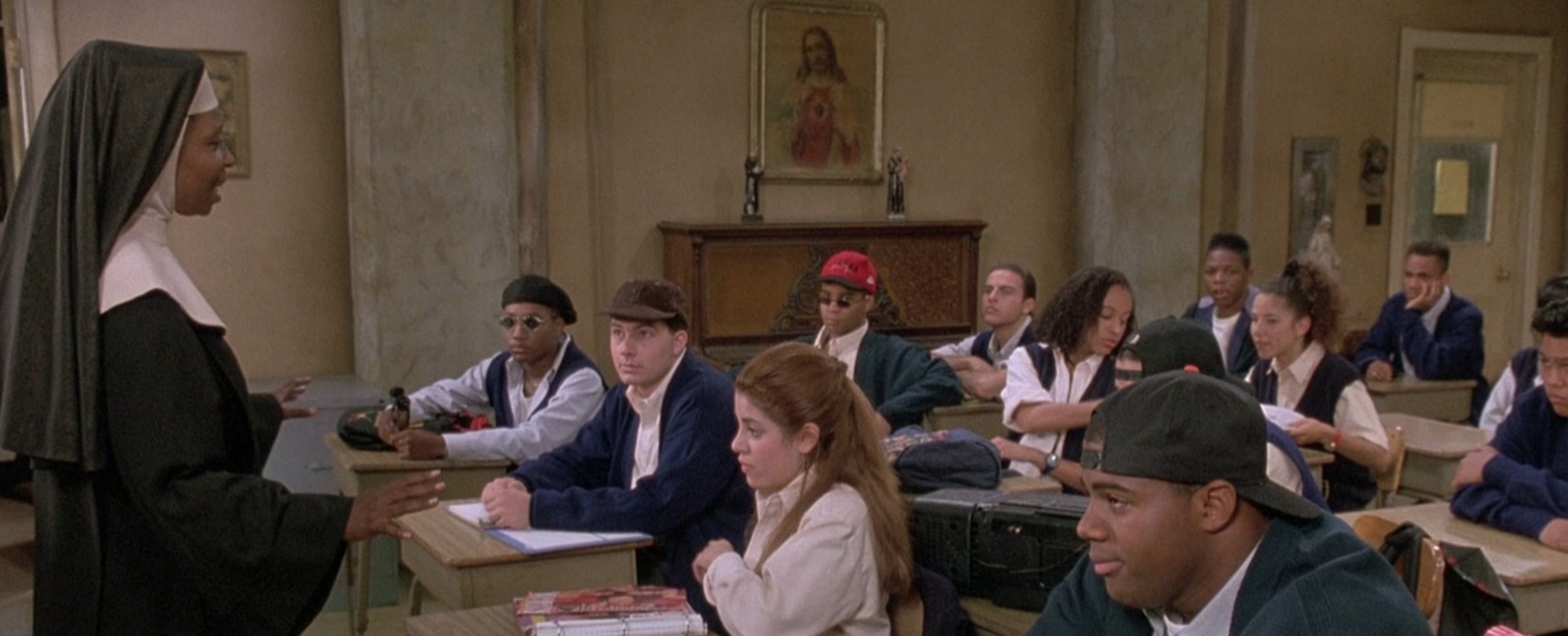‘Sister Act 2’ Set the Gold Standard for Bad Sequels
Credit to Author: Caspar Salmon| Date: Tue, 11 Dec 2018 14:31:25 +0000
This week marks, inconceivably, the 25th anniversary of Sister Act 2: Back in the Habit, a film which still feels so fresh it may as well have been made yesterday – a work of art whose ambition and execution redefined what sequels could do. How did such a film come to be? Join me as we celebrate its existence, with a never more necessary deep-dive into its origins, making and legacy.
To consider the genesis of Sister Act 2: Back in the Habit you need to go on a journey back to the 1990s. In 1993, the hottest name in Hollywood was Whoopi Goldberg. Sister Act 1 had made bank at the box office, and a sequel was duly churned out, barely malking back its investment. The reasons for its comparative failure are surely due to the risks the film was willing to take.
Sister Act had been stewarded onto the screen by the pretty steady hands of Emile Ardolino, the director of Dirty Dancing, while Sister Act 2 was handed to Bill Duke, a talented filmmaker whose directing career it seems to have nail-gunned. Sister Act’s comedy came from a woman in witness protection misbehaving in a nunnery; in Sister Act 2, Whoopi once again dons her wimple but mostly just behaves, concentrated – as she is – on helping some local kids win a music contest.
The one performance that unequivocally pops is Ryan Toby taking everybody to church on “Oh Happy Day”, in a scene that mercifully stages the performance with no added nonsense, and where the singing takes centre stage. Bill Duke is savvy enough to chuck in a Whoopi reaction shot and a Maggie Smith reaction shot in quick succession, the two Oscar winners delivering the goods here. Incidentally, my favourite piece of Sister Act 2-related trivia is that Toby would go on to co-write “Miami” for Will Smith. (The best piece of trivia related to the franchise is that Bette Midler was originally supposed to play the main role but backed out, fearing that “her audience wouldn’t want to see her play a nun”.)
Sister Act 2 is also important for the vital claim it stakes on a sorely underrated genre: the “getting the kids to listen” film, which had something of a heyday in the 90s – that era, of course, being a time when anything the “youth” did, from listening to rap music to taking ecstasy, via having sex in the middle of an AIDS epidemic, seemingly petrified anyone over the age of 30, as satirised in the film Pleasantville (1998). As a result of this generational panic, the decade witnessed a sub-trend of teachers getting the darned teens to get an education – in films like Dangerous Minds (1995), in which Michelle Pfeiffer hilariously gets her miscreant students interested in… Bob Dylan!
Sister Act 2 gamely goes along with this nonsense, featuring scenes where Whoopi gets in on the then-trend for “yo mama” jokes, astonishing her young charges with her feisty smarts. (Every young actor in the film, being a fully trained singer, has about as much street cred as the Hot Cops in Arrested Development.)
Whoopi Goldberg has gone on record as saying that she expects there to be a follow-up to the film. We pray for a cameo from L-Boogie. Joyful joyful, Lord, we adore thee.
This article originally appeared on VICE UK.
